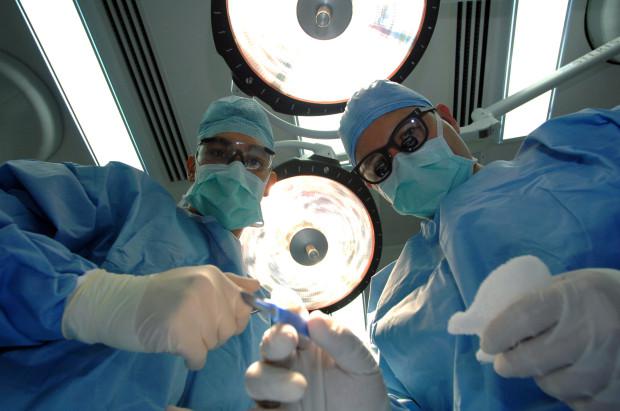555
Disanesteziya - a condition where the patient during surgery is not completely "turned off" under anesthesia
Nightmare patient under skalpelem
Typically, if during surgical anesthesia performed properly, the patient wakes up only after the end of surgery. However, according to the latest medical research as long as the anesthesia, a person can be either conscious or unconscious, that is to react to it, but do not feel pain.

Professor Dzheydip Pandit, an anesthesiologist from St. John's College at Oxford, suggested naming it the third state disanesteziey. According to him, the idea has been discussed on September 19 held the annual convention of the Association of Anaesthetists of Great Britain and Ireland.
As evidence of the existence of this phenomenon, Professor Pandit causes a recent medical experiment during which the 34th surgical patients with their consent given incomplete anesthesia, in which they could move his forearm, right hand. One-third of the volunteers at the same time respond to the requests of researchers and wiggle your hands, but in the rest of anesthesia was effective - the participants did not feel pain during surgery.
The most interesting phenomenon discovered, according Dzheydip Pandit, that the reaction of patients were not spontaneous, and followed immediately after the team of scientists. This suggests that participants were not completely "out cold" (because they have heard of researchers), but could not be awake, because it does not move the fingers on their own and did not feel pain.
Disanestezii phenomenon may explain why, according to recent opinion polls, on average, one person out of 15 thousand remembers how it operated, and those who reported pain, turned three times less - one on 45 thousand.
Dzheydip Pandit suggests that further studies of the phenomenon will help to develop methods for monitoring the effectiveness of anesthetics to patients in the state disanestezii not had unpleasant memories of the operation.
via factroom.ru

Typically, if during surgical anesthesia performed properly, the patient wakes up only after the end of surgery. However, according to the latest medical research as long as the anesthesia, a person can be either conscious or unconscious, that is to react to it, but do not feel pain.

Professor Dzheydip Pandit, an anesthesiologist from St. John's College at Oxford, suggested naming it the third state disanesteziey. According to him, the idea has been discussed on September 19 held the annual convention of the Association of Anaesthetists of Great Britain and Ireland.
As evidence of the existence of this phenomenon, Professor Pandit causes a recent medical experiment during which the 34th surgical patients with their consent given incomplete anesthesia, in which they could move his forearm, right hand. One-third of the volunteers at the same time respond to the requests of researchers and wiggle your hands, but in the rest of anesthesia was effective - the participants did not feel pain during surgery.
The most interesting phenomenon discovered, according Dzheydip Pandit, that the reaction of patients were not spontaneous, and followed immediately after the team of scientists. This suggests that participants were not completely "out cold" (because they have heard of researchers), but could not be awake, because it does not move the fingers on their own and did not feel pain.
Disanestezii phenomenon may explain why, according to recent opinion polls, on average, one person out of 15 thousand remembers how it operated, and those who reported pain, turned three times less - one on 45 thousand.
Dzheydip Pandit suggests that further studies of the phenomenon will help to develop methods for monitoring the effectiveness of anesthetics to patients in the state disanestezii not had unpleasant memories of the operation.
via factroom.ru
Your sense of smell distinguishes 10 different types of odors
In fact, people constantly forget the past and only remember the recent events























